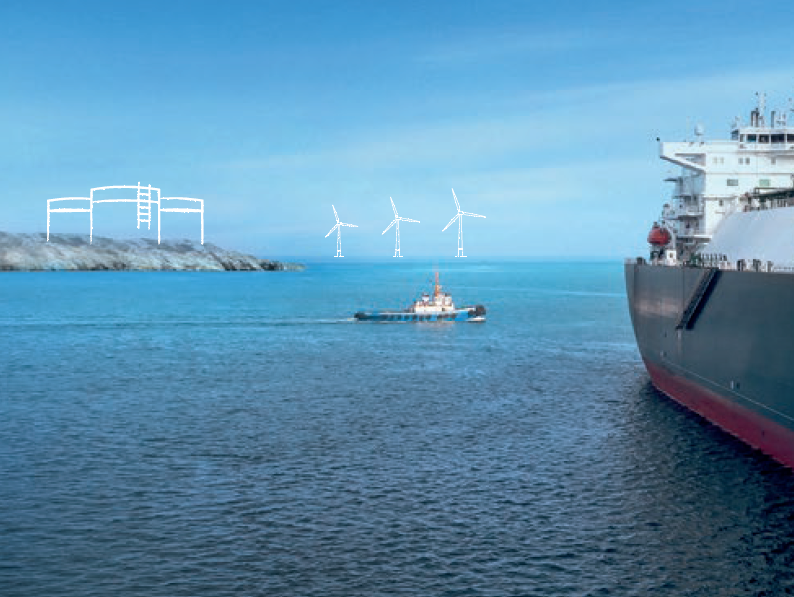LNG is set to be the biggest shipping fuel by 2050 despite its controversial environmental credentials, according to forecasts from class society DNV GL.
The fuel will represent between 40% and 80% of shipping’s energy mix in three scenarios modelled in DNV GL’s Maritime Forecast to 2050. The projection will trouble opponents of LNG, who argue that the release of potent greenhouse gas (GHG) methane during production, transport and in some engines more than offsets its CO2 benefits.
The annual publication asks how shipping can meet IMO’s GHG emission ambitions, particularly to reduce shipping’s carbon intensity by 70% and its total CO2 emissions by 50% (compared to 2008 levels) by 2050.
Given the lack of current options for decarbonising the deep-sea fleet, which represents 80% of shipping’s CO2 emissions, DNV GL recommends a ‘bridging strategy’ that focuses on building in the flexibility to adapt power arrangements, fuel storage and landside bunkering and supply infrastructure as carbon-neutral fuels become available.
That strategy has led the class society to recommend that ship owners building vessels over the next five to 10 years opt for dual-fuel engines. Although LNG is a fossil fuel, these engines and infrastructure could also be used for carbon-neutral biogas when it is more widely available as well as synthetic methane generated from renewable electricity. Another option could be dual-fuel engines running on LPG, which can later be used to burn clean ammonia, also generated as an electrofuel.
Based on an anticipated 39% growth in global seaborne trade to 2050, total emissions would only be reduced by 27% if no further policy requirements are introduced. Under this scenario, shipping fails to meet IMO goals despite a 35-40% reduction in carbon intensity driven by energy efficiency advances. On top of this evolution in energy efficiency, DNV GL anticipates that 30-40% of shipping’s energy will need to come from carbon-neutral fuels to reach the 2050 goals.
However, uptake of carbon-neutral fuels has been slow. DNV GL environmental consultant Øyvind Endresen noted that it has taken 20 years for LNG infrastructure to develop to a point where today 0.14% of the global fleet uses the fuel.
“We will need to be much faster to develop promising fuel candidates if we want to meet IMO targets,” he said.
In an analysis that has annoyed some advocates of hydrogen, DNV GL sees limited uptake for the fuel by 2050. In the ‘design requirements’ pathway, which models an abrupt policy change around 2040 to enforce carbon-neutral designs in newbuildings, hydrogen and fuel cells still represent around 1% of the global fleet, hindered by high investment costs and technical constraints. More encouraging is the uptake of shore power, which by 2050 is anticipated to make up between 5-7% of shipping’s energy mix.
Despite decarbonisation efforts there is still room for today’s fuels. Heavy fuel oil, used in conjunction with scrubbers to meet sulphur requirements, will represent 10% of the mix if there is an abrupt policy change and 17% if there is no policy change from today. HFO use is only eliminated under the third pathway, modelling a gradual change in policy focusing on operational requirements.
The ‘operational requirements’ pathway exemplifies the focus on bridging technologies and fuel flexibility advocated by DNV GL, with ship owners installing technology today that can also handle (with modifications) cleaner future fuels.
The report notes: “There is a big risk that for a vessel built in 2020, the most competitive fuel in the ship’s early life will not necessarily be the same as when it is scrapped… Planning for gradual training and incentivising shipowners to invest in flexible ships… would ease the transition and minimise the risk of investing in stranded assets.”
































